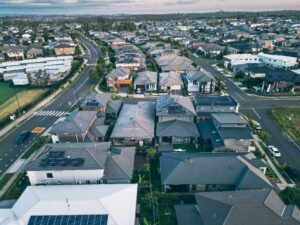The Ripple Effects of Trump’s Tariffs on China’s EV Exports and Opportunities for Australia

As Donald Trump assumes the presidency on January 20, 2025, his administration’s proposed trade policies are expected to play a crucial role in shaping the international economic climate. These policies are based on the imposition of tariffs with China being particularly affected which may have implications for exports of electric vehicles (EVs) and semiconductors. Due to its extensive involvement in global supply chains Australia is facing both obstacles and opportunities at a critical juncture in the industry.
Understanding Tariffs and Their Economic Implications
Governments impose tariffs on imported goods to protect their industries from foreign competition, generate revenue, and serve as negotiation tools in the international market. While tariffs shield local businesses, they also carry high inflationary effects on consumers and can contribute to inflation. Tariffs can harm the competitiveness of exporters in certain market sectors leading to price adjustments that can cause export costs to increase.
Trump’s Proposed Tariff Regime
During his 2024 campaign, President-elect Donald Trump proposed imposing a universal baseline tariff of 10% to 20% on all imports, with a specific 60% tariff targeted at Chinese goods. These tariffs are proposals and would require legislative and administrative processes before implementation. Protectionism is intended to improve U.S. domestic manufacturing and reduce trade imbalances. Even so, such measures may strain international trade and disrupt established supply chains.
The protectionist language that emerged during Trump’s initial term (2016-2020) and sustained under the Biden administration (2020-2024) is anticipated to escalate potentially causing tensions in international trade.
Impact on Australia’s Economy
Due to its close involvement in international trade, Australia is prone to being subject to changes in global trade policies. During Trump’s first term, Australian steel and aluminium exports were exempt from U.S. tariffs. However, under the proposed universal tariffs, it is uncertain whether similar exemptions would apply. Certain crucial Australian exports to the U.S., such as beef and wine imports, machinery manufacturing, pharmaceuticals (PVA), and minerals, may face higher prices at times, resulting in reduced market share for Australian products.
In addition, there are other indirect consequences if U.S. tariffs slow China’s economy. Australia’s mining industry may face difficulties if China, a major consumer of iron ore, coal, and other minerals, slows down due to slower Chinese manufacturing and construction. This could result in a weakened demand for these exports.
Implications for China’s Electric Vehicle Exports
China has rapidly ascended to a leadership position in global EV production, supported by substantial government backing and economies of scale. The U.S. has been a significant market for Chinese EVs; however, a 60% tariff would render these vehicles prohibitively expensive for American consumers, likely diminishing their market share.
In response, Chinese manufacturers may seek alternative markets to offset the loss of U.S. sales. Europe, with its growing demand for EVs, could be a primary target. However, existing European tariffs and stringent regulations might limit the influx of Chinese vehicles. Consequently, regions with more open trade policies, such as Australia, could become attractive destinations for Chinese EV exports.
Opportunities and Challenges for Australia
Market Diversification and Consumer Choice
An increase in Chinese EV imports could enhance competition in the Australian automotive market, potentially leading to more affordable options for consumers and accelerating the adoption of electric mobility. This influx could also stimulate local infrastructure development, such as charging stations, to support a growing EV fleet.
Domestic Manufacturing and Economic Considerations
While an influx of Chinese EVs offers consumer benefits, it may pose challenges to any emerging domestic EV manufacturing initiatives in Australia. Local manufacturers could struggle to compete with the cost efficiencies of Chinese producers, potentially hindering the growth of Australia’s own EV industry.
Implications for the Semiconductor Industry
The semiconductor sector is another focal point of Trump’s trade policies. Tariffs on Chinese semiconductor imports, coupled with export controls on advanced computing technologies, aim to curb China’s technological advancements. These measures could disrupt global supply chains, affecting industries reliant on semiconductors, including automotive, consumer electronics, and telecommunications.
Potential Benefits for Australia
Australia could capitalise on these disruptions by positioning itself as a neutral partner in the semiconductor supply chain. Investments in research and development, along with strategic partnerships, could enable Australia to play a more significant role in the global semiconductor market. Additionally, Australia’s abundance of critical minerals essential for semiconductor manufacturing, such as silicon and rare earth elements, could become increasingly valuable.
Strategic Considerations for Australia
Trade Policy and Diplomatic Relations
Australia’s close alliance with the U.S. and its economic ties with China place it in a delicate position. Navigating this complex landscape will require astute diplomatic efforts to maintain favourable trade relations with both nations while safeguarding national interests. Prime Minister Anthony Albanese has emphasised the importance of fair trade, noting that the U.S. maintains a trade surplus with Australia, which could be a point of negotiation in seeking tariff exemptions.
Economic Diversification and Resilience
Australia may need to diversify its economic partnerships and invest in emerging industries as a means of countering trade tensions worldwide. In developing markets such as renewable energy, advanced manufacturing, and technology there is potential to strengthen economic resilience. The consolidation of regional alliances and partnerships like the Comprehensive and Progressive Agreement for Trans-Pacific Partnership (CPTPP) or the Regional Comprehensive Economic Partnership (RCEP) can help buffer against tariffs.
Conclusion
The upcoming Trump administration’s trade policies are expected to have a profound impact on global markets. These advancements pose a challenge for Australia, but they also offer opportunities. With the ability to strategically manage this dynamic environment, Australia can leverage its unique position in the global economy to support economic growth.
What are the Best ASX Stocks to invest in right now?
Check our buy/sell tips
Blog Categories
Get Our Top 5 ASX Stocks for FY26
Recent Posts
Diversifying Portfolios with ASX Consumer Stocks: Opportunities and Risks
The ASX 200 has delivered significant volatility recently, and market participants observing the screens in 2025 understand the turbulence firsthand.…
Is Lendlease (ASX:LLC) out of the doldrums for good?
Lendlease (ASX:LLC) has for the past several years been the classic definition of a ‘value trap’. You think a good…
Here are the 2 most important stock market taxes that investors need to be aware on
As one of two certainties in life, investors need to be aware of stock market taxes. Investors may be liable…



